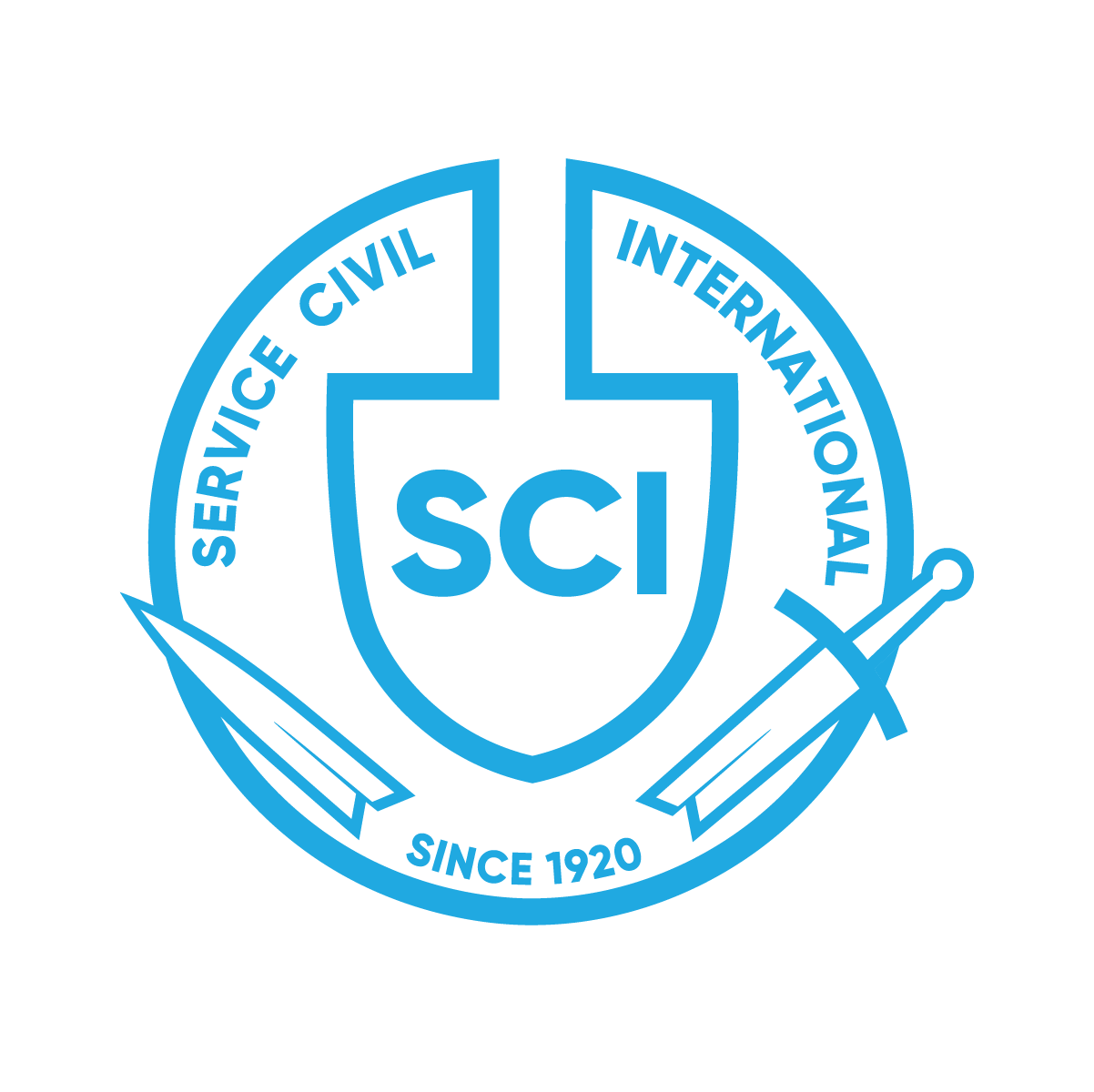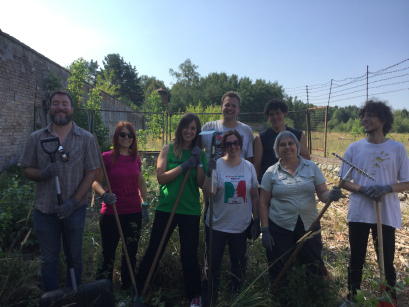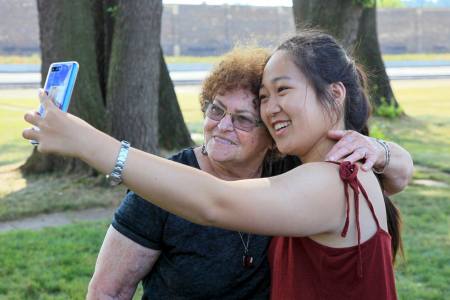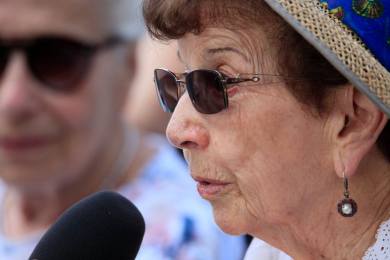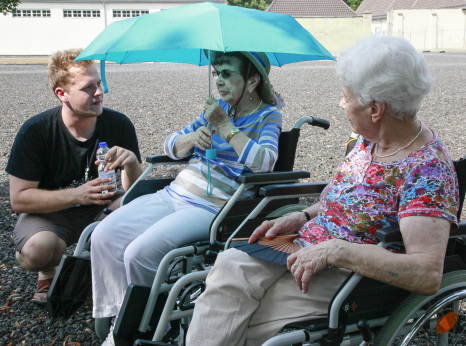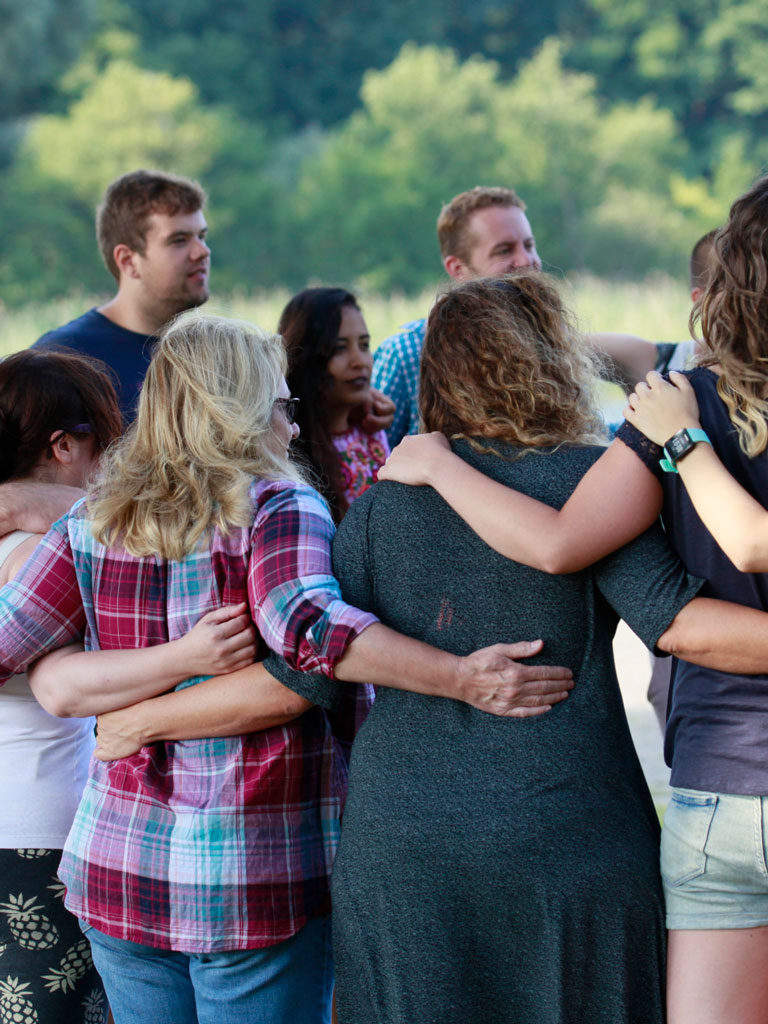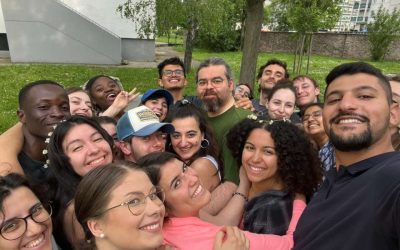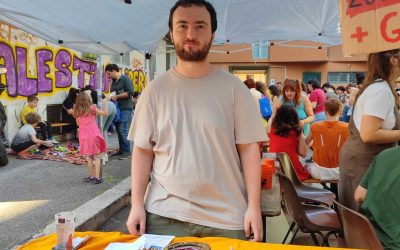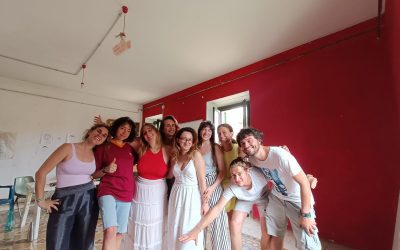Environment
One of the greatest privileges possible
Workcamp
Written by Nicolai Rosier, volunteer with the Europe for Citizens program in the IS of SCI from Germany
A new surprise to me: We got used to living in this place very quickly, arriving as individuals of free choice. The walls that separate us from one of the most horrifying places ever present. Wherever our eyes glance houses of perpetrators and buildings were mass destruction was systematically planned in its smallest detail. Volunteering, learning and living in a memorial – a former Women’s Concentration Camp – is so much different from most peoples’ vacations plans. This year was my third time coming back for a Peacecamp in Ravensbrück. Why? Because I’m convinced sharing my experiences and impressions makes others sensible about our history, learning from it and sharpening their senses reflecting their environment.
Surrounded by forest and lakes Fürsternberg (Havel), a city close by, used to be a well-known recreational area with forests and lakes. In the 1930’s the location caught the SS’s attention, the municipality closed a deal, and eventually in 1939 first trains deported hundreds of prisoners. Liberated from horror and as free individuals with choosing to be there we slept, ate, learned, worked, danced, sung, acted, laughed and cried together for two weeks in Ravensbrück.
Sound in the Silence meets Generationenforum
The first week our group was part of a joint program named Sound in the Silence meets Generationenforum.
We found ourselves in a huge diverse group set with a second Peacecamp, which arrived a week early, many individual participants from all over Germany, a group of artists, memorial and foundation staff, and most importantly four survivors: Batsheva Dagan, Emmie Arbel, Judit Varga and Selma Van de Perre, accompanied by relatives.
Generationenforum is a platform organized by the educational department of the memorial to bring together participants with survivors to offer room for unique learning opportunities. We had conversations in groups with the survivors and lived in the youth hostel together during the program – no question tabooed.
Sound in the Silence is an interdisciplinary artistic and performative project, dealing with difficult aspects of Europe’s past. It combines art and history and offers a multidimensional perspective to deal with the past and reflecting on emotions. Half day we spent with the survivors in group conversations, and the other half we spent in our workshop groups. Together we ran a performance.
May I introduce…
…the artists: Kat a contemporary dancer, making you feel comfortable in your body and aware of every single cell. Christian a radio moderator and sound designer giving you the availability to listen differently to your surroundings and noticing the substantial. Kuba a theater director tickling the little child in us and control and express bare emotions. Tommy a rapper and producer leading us to create complex beats with rhythm and wit matched with our own words. Dan was the team coordinator and director of the overall performance.
The entire process ending with the performance in front of the survivors and audience was open from the beginning. It developed wildly during the four days of the program. After focusing in our workshop groups, we joined and put together a performance that left many speechless – especially Batsheva, Emmie, Judit and Selma.
‘Sound in the Silence’?!
Yes! The experience participating was as beautiful as it sounds. With our ideas, with our expressions we gave remark to those who cannot be here. That their stories will never be untold, nor forgotten. Stories from a place whose ‘residents’ were not allowed to exist – nor speaking, laughing, connecting, or teaching.
Extensively I enjoyed the different perspective we took through this program onto historical context, the stories of the survivors and our feelings. We had room to process our thoughts which gave us a grasp of understanding what has happened.
“Ask today
For today is tomorrow’s yesterday.
[…]
Tomorrow will have no answer
No response of eyes that care,
no one to testify and say
“I was there.”
Ask now, ask again.
This is the time
Yesterday will not return.”[Batsheva Dagan, 93, Israel]
We enjoyed a huge privilege – one of the greatest privileges possible. We didn’t only share time with these strong ladies in a group conversation, but – if we chose to – we shared our own, very intimate, moments with them. Also, there is more than the Shoah to talk about with them! We shared many moments of honest laughter, of silliness and randomness. Yes, it might also be possibility that there was wine involved…
Emmie’s message she shared with us: “Listen and remember!”
“Emmie, I will!”
The Big Cut: Week 2
As turbulent as the first week started, developed and passed by, as tough was the cut starting into our second week. We said goodbye to all the other participants, eventually to the other Peacecamp and then it was only our group who was left. You can feel lonely at this place, incredible lonely. The entire area of the camp is unimaginable wide. Countless trees surrounding you and many buildings surrounding abandoned. In quiet minutes, when all visitors and staff left, you can listen to the sound of nature. Sometimes you grasp a sense of peace in the middle of the remains of terror and destruction. I don’t know if you understand what I mean; you need to experience and feel it yourself.
The second week passed by in a different pace. During the first week we fired so many emotions on all possible channels that the weekend in between barely left enough room to recharge our batteries and emotional reserves. Good news for week number two: Good weather, lots of physical work that needs to be done, lots of breaks and free time and on top many interesting workshops. Despite two days we supported the archive indexing books and documents to prepare registers of names and places mentioned, we worked outside with the gardeners.
You could feel how the physical work outside relieved frustration and paralysis that came over us. Frustration because you compare the uprising of National Socialists leading to a movement of terror through Europe, more worldwide, and become frustrated to see that similar patterns can be observed in today society. The overwhelming feeling where to start, how to involve other like-minded to be heard one day, paralyzed me as individual to a certain extend. Working outside bunking off trees and weeds freeing historical foundations helped to sort my thoughts and retrench my inner unease.
The study part of the second week fed our curios minds with lots of different impressions. We visited the enclosed forced labor camp from Siemens, the Sachsenhausen Memorial and participated and discussed in a workshop about archaeology in memorials. One notable experience was the visit of the Uckermark Youth Concentration Camp for Girls and Young Women and later Extermination Camp for prisoners of the Ravensbrück Women’s Concentration Camp. Notable, because nothing of the original place is remained. Worse, there is a lot to see. The Soviet Union burned and torn down what the Nazis couldn’t wipe out before they fled and used the ground as testing territory and storage for tanks and other war machinery. You walk on concrete where barracks used to stand, or corpses might be buried. Even geography has been changed. It is part of the history of this place and a reality to face. We left with intense and mixed impressions.
No doubt, volunteering in memorials is a unique experience like all different short-term volunteering opportunities. I can’t even precisely tell why I come back to this place year after year. Maybe it is because there is so much more to learn and so much more to tell about this place. The educational staff of the memorial is indeed a unique team that offers amazing opportunities to curios ears and eyes to actively learn about the history of Ravensbrück and historical context. Thus, having the opportunity today to raise questions to those who witnessed yesterday – I can not imagine a greater privilege!
More Information about:
Memorial Ravensbrück
Sound in the Silence Project
Photo Credits: Carsten Büttner, Ravensbrück Memorial & Nicolai Rosier
Thanks to Stephanie and Kerry for your valuable remarks on my text.
You can still join!
Want to have your own volunteer experience for peace?
Read more Voices of Volunteers
